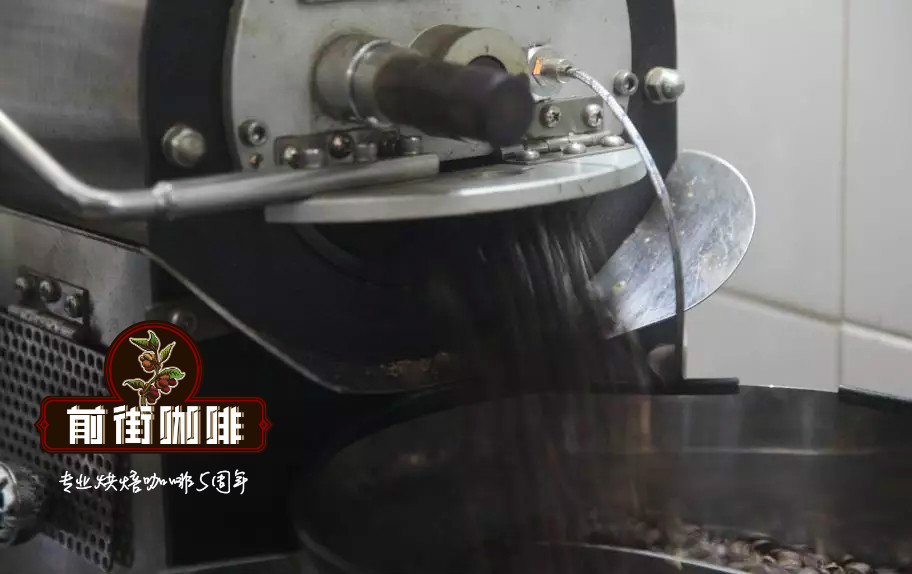Introduction to the method of flavor description and taste treatment of coffee bean varieties in Ecuador
In 1535, the Galapagos Islands were discovered by chance by Frei Thomas de Berlanga of Spain and others. Thomas was born in 1487 on the banks of the Duro River in the Spanish province of Soria. He was the fourth bishop of Panama at that time. He was ordered to Peru. When his ship set out from Panama on February 23, under the impact of a strong current, they were carried to an unknown sea in the outer ocean. On March 10, an island in the Galapagos Islands was discovered. With only two days of fresh water left on board, the sailors landed in lifeboats and found plenty of seals, turtles, giant tortoises that could carry people and viper-like iguanas on the island, but they could not find fresh water, so they headed for another larger island more than 20 kilometers away. As the wind was still not blowing, it took them several days to get there, the water ran out quickly, and they had to starve, including the horses on board. 340 years after Frey Thomas de Berlanga discovered the island, in 1875, an indigenous man named Cobos arrived on San Cristobal Island, where he established the Hasenda Coffee Garden and planted about 100 hectares of Arabic bourbon coffee trees. Because the plantation is located between 140 meters and 275 meters above sea level, the climate is equivalent to the inland climate between 915 meters and 1830 meters, and the unique geographical conditions are suitable for the growth of super hard coffee beans (SHB) with high acidity, so this high quality coffee is settled here.
Famous brand in South America, Ecuadorian A-class coffee, with state-owned large-scale seed garden;100% produced from 1300-2000 meters of natural vegetation in the highlands, popular in Europe and America, to taste the exquisite world-class Arabica Arabica flavor at supermarket prices.
ES coffee is a clean organic coffee grown on the slopes of the Andes in Latin America. It is 100% pure coffee, and the quality of our coffee has been safeguarded and enhanced through efforts to improve the economic and working conditions of the plantations, while maintaining the small-scale coffee plantations and the diversity of the organisms in the gardens. In addition, it is one of the most important economic sources of coffee origin, because it is all locally dried and packaged, which ensures that it is a very unique coffee in the world! but also to preserve its unique flavor.
As coffee is consumed around the world, the world coffee industry moves toward mass production, and San Cristobal's smaller and less reliable coffee industry is in trouble and may eventually be forced to give up without profit. It wasn't until the early 1990s that the Gonzalez family bought Hassenda Coffee Plantation. The local microclimate created by the Humboldt Current, intense equatorial sunlight, and rapid temperature changes (43 ° C at sea level and 10 ° C to 16 ° C at 275 meters above sea level) provided unique favorable conditions for the Gonzalez family to expand coffee plantations. The Gonzalez family doubled the size of the coffee plantation by clearing the early land

Important Notice :
前街咖啡 FrontStreet Coffee has moved to new addredd:
FrontStreet Coffee Address: 315,Donghua East Road,GuangZhou
Tel:020 38364473
- Prev

Introduction to the processing method of Yunnan small Coffee Huaguoshan Coffee Bean
The western and southern parts of Yunnan Province are located between 15 N and the Tropic of Cancer, most of which are 1000-2000 meters above sea level. The topography is dominated by mountains and slopes, with large ups and downs, fertile soil, sufficient sunshine, rich rainfall and large temperature difference between day and night. These unique natural conditions form the special taste of Yunnan small-grain coffee, which is strong but not bitter, fragrant but not strong, slightly fruity. As early as fifty years
- Next

Flavor description of Ugandan coffee beans introduction to manors of variety producing areas by taste treatment
Mbale on the eastern side of the Elgang Mountains and other producing areas on the western side near the border of the Democratic Republic of the Congo have the export name Wugar. The official ranks are Oaganic (Organic), Bugisu AA, Bugisu A, Bugisu B, Bugisu PB, Wugar, Drugar and other unlisted grades. To find a good Ugandan coffee, you must first recognize BugisuAA and A.
Related
- Detailed explanation of Jadeite planting Land in Panamanian Jadeite Manor introduction to the grading system of Jadeite competitive bidding, Red bid, Green bid and Rose Summer
- Story of Coffee planting in Brenka region of Costa Rica Stonehenge Manor anaerobic heavy honey treatment of flavor mouth
- What's on the barrel of Blue Mountain Coffee beans?
- Can American coffee also pull flowers? How to use hot American style to pull out a good-looking pattern?
- Can you make a cold extract with coffee beans? What is the right proportion for cold-extracted coffee formula?
- Indonesian PWN Gold Mandrine Coffee Origin Features Flavor How to Chong? Mandolin coffee is American.
- A brief introduction to the flavor characteristics of Brazilian yellow bourbon coffee beans
- What is the effect of different water quality on the flavor of cold-extracted coffee? What kind of water is best for brewing coffee?
- Why do you think of Rose Summer whenever you mention Panamanian coffee?
- Introduction to the characteristics of authentic blue mountain coffee bean producing areas? What is the CIB Coffee Authority in Jamaica?

